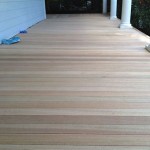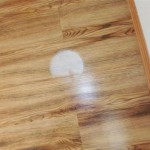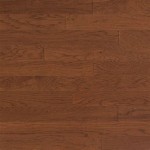Luxury Vinyl Plank Flooring Explained
Luxury Vinyl Plank (LVP) flooring has surged in popularity as a durable, aesthetically versatile, and cost-effective alternative to traditional hardwood, tile, and laminate options. Understanding its composition, construction, benefits, and types is crucial for making informed decisions for residential or commercial projects. This article provides a comprehensive overview of LVP flooring, detailing its various aspects to assist in evaluating its suitability for specific needs.
What is Luxury Vinyl Plank Flooring?
LVP is a multi-layered synthetic flooring product designed to mimic the appearance of natural materials such as wood or stone. It is manufactured using several distinct layers, each contributing to the flooring's overall performance and aesthetic appeal. These layers work in concert to provide durability, water resistance, and visual realism.
The primary layers typically include:
- Wear Layer: This is the topmost layer and the first line of defense against scratches, scuffs, and staining. It is a transparent coating, often made of urethane, that determines the flooring's resistance to wear and tear. A thicker wear layer indicates greater durability and suitability for high-traffic areas.
- Print Layer: Located directly beneath the wear layer, the print layer is a high-resolution photographic image of wood, stone, or other desired patterns. Advanced printing technology allows for realistic textures and intricate designs, contributing to LVP's aesthetic versatility.
- Core Layer: The core layer provides the flooring's structural stability and resistance to indentation. This layer is typically made of a dense vinyl composite material. Variations in core composition influence the flooring's overall performance, including its water resistance and dimensional stability.
- Backing Layer: The bottom layer provides support and cushioning, and it may include an attached underlayment for added comfort and sound absorption. The backing layer also helps to protect the floor from moisture coming from the subfloor.
LVP is available in various thicknesses, plank sizes, and textures, allowing for customization to suit different design preferences and functional requirements.
Key Advantages of Luxury Vinyl Plank Flooring
LVP flooring offers a range of benefits that contribute to its widespread appeal. These advantages include durability, water resistance, aesthetic versatility, ease of installation, and ease of maintenance. Comprehending these benefits allows for a well-informed assessment of LVP as a flooring solution.
Durability: The wear layer on LVP flooring provides excellent resistance to scratches, stains, and fading. This makes it suitable for high-traffic areas, households with pets, and commercial spaces. The durability of the wear layer is typically measured in mils (thousandths of an inch); a higher mil rating indicates greater resistance to wear and tear.
Water Resistance: Unlike hardwood, LVP is highly water-resistant, and some types are even completely waterproof. This makes it an ideal choice for areas prone to moisture, such as bathrooms, kitchens, and basements. The water resistance properties are inherent in the vinyl composition of the core and backing layers.
Aesthetic Versatility: LVP is available in a wide range of styles, colors, and textures, replicating the look of natural wood, stone, and tile. Advanced printing technology enables realistic grain patterns, knots, and textures, offering a broad spectrum of design possibilities. This enables homeowners and designers to achieve the desired aesthetic without the cost or maintenance associated with natural materials.
Ease of Installation: LVP flooring is typically designed for easy installation, often featuring click-lock systems that allow planks to be connected without the need for adhesives. This simplifies the installation process for both professionals and DIY enthusiasts. Some LVP products also come with peel-and-stick backing for even simpler installation.
Ease of Maintenance: LVP flooring is relatively easy to clean and maintain. Regular sweeping or vacuuming is sufficient to remove dirt and debris. Occasional mopping with a mild detergent is recommended for more thorough cleaning. The wear layer's stain resistance also minimizes the need for intensive cleaning or specialized products.
Types of Luxury Vinyl Plank Flooring
LVP flooring can be categorized based on its construction, core composition, and installation method. Understanding these distinctions is crucial for selecting the most suitable type of LVP for specific applications and performance requirements.
Based on Construction: There are two primary types of LVP based on construction: Flexible LVP and Rigid Core LVP.
Flexible LVP: This type of LVP is more pliable and can be bent or flexed during installation. It is typically thinner than rigid core LVP and often relies on a more flexible core material. Flexible LVP is generally less expensive than rigid core options, but it may be more susceptible to indentations and may require a perfectly level subfloor for optimal performance.
Rigid Core LVP: This type of LVP features a more rigid and dimensionally stable core. This added rigidity helps to resist indentations and allows for installation over minor subfloor imperfections. Rigid core LVP generally falls into two subcategories: Stone Plastic Composite (SPC) and Wood Plastic Composite (WPC).
Stone Plastic Composite (SPC): SPC LVP features a core made from a blend of limestone powder and stabilizers. This core is exceptionally dense and rigid, providing excellent resistance to dents, scratches, and water damage. SPC is a popular choice for high-traffic areas and commercial applications.
Wood Plastic Composite (WPC): WPC LVP features a core made from a blend of wood pulp and plastic composites. This core is lighter and more comfortable underfoot than SPC, offering a softer and warmer feel. WPC is often preferred for residential spaces where comfort is a priority.
Based on Installation Method: LVP can also be categorized based on its installation method. The primary installation methods include click-lock, glue-down, and loose-lay.
Click-Lock LVP: This type of LVP features interlocking edges that allow planks to be snapped together without the need for adhesives. Click-lock systems are relatively easy to install and can be used over a variety of subfloors. This is a popular choice for DIY installations.
Glue-Down LVP: Glue-down LVP requires the use of adhesive to secure the planks to the subfloor. This method provides a more permanent and stable installation, which is often preferred for high-traffic commercial areas or areas prone to moisture. Proper subfloor preparation and adhesive selection are crucial for a successful glue-down installation.
Loose-Lay LVP: Loose-lay LVP is designed to be installed without the use of adhesives or click-lock systems. These planks typically feature a high-friction backing that helps them to grip the subfloor and stay in place. Loose-lay LVP is relatively easy to install and can be removed and reused if necessary. This is often used where a floating floor is needed.
Factors to Consider When Choosing LVP Flooring
Selecting the appropriate LVP flooring requires careful consideration of several factors, including the intended use of the space, the level of traffic, the subfloor conditions, the budget, and the desired aesthetic. Evaluating these factors enables a well-informed decision that aligns with specific needs and preferences.
Wear Layer Thickness: The thickness of the wear layer is a critical factor in determining the flooring's durability. For high-traffic areas, commercial spaces, or households with pets, a thicker wear layer (12 mil or higher) is recommended. For lighter residential use, a thinner wear layer (6-12 mil) may suffice.
Core Composition: The choice between flexible LVP, SPC, or WPC will depend on the desired level of rigidity, indentation resistance, and comfort underfoot. SPC offers superior durability and water resistance, while WPC provides a softer and warmer feel.
Installation Method: The installation method should be considered based on the ease of installation, the subfloor conditions, and the intended use of the space. Click-lock is generally easier for DIY installations, while glue-down provides a more permanent and stable solution.
Subfloor Preparation: Proper subfloor preparation is essential for a successful LVP installation. The subfloor should be clean, level, and dry. Any imperfections or unevenness should be addressed before installing the flooring. Failure to properly prepare the subfloor can result in issues such as unevenness, squeaking, and premature wear.
Budget: LVP flooring is available in a range of price points, from affordable to premium. It is important to establish a budget and select a product that offers the desired combination of performance and aesthetics within the allocated budget. Consider the long-term cost of ownership, including maintenance and potential replacement costs, when evaluating different options.
Aesthetic Considerations: LVP offers a wide range of styles, colors, and textures. Select a product that complements the overall design and decor of the space. Consider the lighting conditions and the size of the room when choosing the color and pattern of the flooring.
Warranty: Check the manufacturer's warranty to understand the coverage and limitations. A longer warranty typically indicates greater confidence in the product's durability and performance.
Maintenance Requirements: Consider the long-term maintenance requirements of the flooring. LVP is generally easy to clean and maintain, but some products may require specialized cleaning products or techniques. Adhere to the manufacturer's recommendations for cleaning and maintenance to prolong the life of the flooring.
By carefully considering these factors, informed decisions can be made regarding the selection of luxury vinyl plank flooring for specific applications and ensuring long-term satisfaction with the flooring investment.

Luxury Vinyl Flooring San Diego What Is Lvp Made From

Vinyl Plank Wear Layers What Does A Layer Do Reallyfloors America S Est Hardwood Flooring

Luxury Vinyl Flooring Lvt And Lvp Thickness Guide Wood Beyond Blog

What Is Wpc Vinyl Flooring Discover The Future Of

Glue Down Vs Floating Luxury Vinyl Flooring

The Best Luxury Vinyl Plank Flooring Laying Direction Explained Direct Blog

Types Of Vinyl Flooring Explained Twenty Oak

Vinyl Plank Flooring Options From Von Tobel

6 Vinyl Flooring Types Explained And Compared Wood Beyond Blog

Spc Flooring Vs Lvp Vinyl Direct Blog
Related Posts








